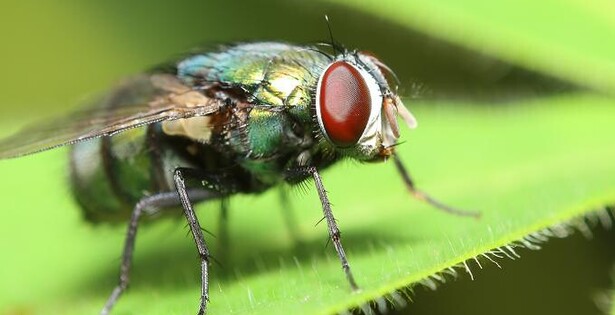Flystrike is the most important external parasite of sheep in New Zealand, and yes, it's definitely in Southland.
There are three species of blowflies that can initiate flystrike in sheep and two species that are secondary invaders.
When and how does this happen?
The main flystrike challenge period is November through to March. Adult flies and larvae, which have overwintered, become active and start to hatch once the soil temperature exceeds 12 degrees. Once you start seeing flies in your house (not cluster flies) your stock is at risk. The flies are attracted to the sheep with feacal and urine staining, wounds, and fleece or foot rot.
Flies lay their eggs on the sheep where there is warmth, moisture, and a food supply. The eggs hatch and the maggots feed on the skin, causing more damage. This attracts more flies, exacerbating the problem.
What will you see?
The earliest signs of flystrike are those of irritation - stamping, tail twitching, rubbing, and biting the affected area. After a few days, the sheep stop eating, seek shade, and appear depressed. They will become dehydrated. Wounds may be seen and wool will fall out. Affected sheep may take up to six weeks to recover lost weight, and up to eight months for the fleece to recover.
How do you treat this?
Flystruck sheep need to be treated as soon as possible. Clip the wool around the struck site until you get clear margins. Take care not to expose pink skin though, as this can cause sunburn and delay healing. Apply an approved insecticide dressing to the affected area and the fleece around it. Maggo can be used, however, be careful when using it, as it works on the nerve system of flies. The jumping of the sheep when being treated is its nerve endings being stimulated, and the same can happen to us if we get it on our skin. Cyrex is another product that can be used. It prevents the larvae moulting, so doesn't kill them immediately, however is much safer for the animals and people. All affected animals should be given a non-steroidal anti-inflammatory injection (metacam) too, to get the inflammation down and provide some pain relief, making them heal quicker. All affected animals should be provided with food, water, and shade until healed. Remember those with wounds cannot be sent to the works until they have healed. Severely affected animals should be euthanised.
How do you prevent this?
The best approach to preventing flystrike is to use a combination of strategies to keep sheep as unattractive to flies as possible. Anticipate the strike season using flytraps and assessing weather conditions. Make sure you dispose of carcasses appropriately so you don’t attract more flies. Shearing is effective at reducing flystrike for a few weeks as the eggs and maggots dry out, however, any wounds can become flystruck. Crutch and dag your sheep to remove soiled wool, and maintain a good parasite control programme. It is likely you will need to dip with something; ensure you dip with the correct wool length and around the timing of the expected challenge for maximum benefit. Remember there will be a meat withhold period for your lambs and cull ewes.
Please don’t hesitate to contact your KeyVet for advice on managing flystrike on your farm.
- Emily Chisholm

